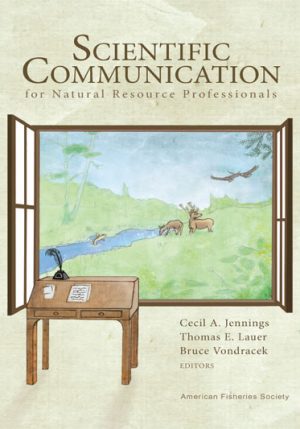Biology, Management, and Culture of Walleye and Sauger
$0.00 – $79.00
Description
Click HERE to read a review.
Bruce A. Barton, editor
570 pages, index
Published by the American Fisheries Society, June 2011
ISBN: 978-1-934874-22-6
doi: https://doi.org/10.47886/9781934874226
Summary
This new compendium serves as a single comprehensive source of information on the biology, ecology, management, and culture of walleye and sauger in North America.
Early chapters cover Sander systematics, including osteological evidence and molecular and population genetics and recent advancements in stock identification. Extensive information is documented on habitat requirements for various life history stages and how these stages can be influenced by environmental perturbations. Other chapters describe environmental biology and feeding energetics and provide details on walleye and sauger life histories, walleye population and community dynamics in lakes that reflect the influence of lake size, fishing methods, and various management techniques using case histories, and exploitation from recreational, commercial, aboriginal, and mixed fisheries. Harvest regulations, sampling procedures, and their effectiveness are also reviewed and evaluated. Final chapters review and analyze stocking procedures, marking techniques, ecological effects of stocking, and the state of the art of walleye and hybrid walleye culture.
This reference work will be used by fishery scientists, biologists, managers, culturists, students, and interested public such as anglers and conservationists.
Contents
1 Introduction (Peter J. Colby)
1.1 The Past
1.2 The Present
1.3 The Future
1.4 References
2 A Phylogenetic Analysis of Percidae Using Osteology (John C. Bruner)
2.1 Introduction
2.2 Methods of Analysis
2.3 Results of Osteological Analyses
2.4 Derived Characters that Define the Percidae
2.5 Relationships of Outgroups with Percidae
2.6 Characters Relating to Stizostedion (= Sander)
2.7 Summary
2.8 Acknowledgments
2.9 References
2.10 Appendix
3 Molecular Systematics of Sander, and Hybridization between Walleye and Sauger (Neil Billington and Brian L. Sloss)
3.1 Introduction
3.2 Molecular Systematics
3.3 Hybridization between Walleye and Sauger
3.4 References
4 Distribution and Population Genetics of Walleye and Sauger (Neil Billington, Chris C. Wilson, and Brian L. Sloss)
4.1 Introduction
4.2 Distribution and Geographic Ranges
4.3 Population Genetics and Fisheries Management
4.4 Summary and Conclusions
4.5 References
5 Walleye and Sauger Habitat (Michael A. Bozek, Timothy J. Haxton, and Joshua K. Raabe)
5.1 Introduction
5.2 Biogeographic Distribution
5.3 Reproductive Strategies
5.4 General Habitat Requirements
5.5 Limiting Factors and Perturbations
5.6 Habitat Improvement
5.7 Summary
5.8 Acknowledgments
5.9 References
6 Reproduction and Environmental Biology (Bruce A. Barton and Terence P. Barry)
6.1 Introduction
6.2 The Reproductive Endocrine System
6.3 Reproductive Development
6.4 Spawning and Fertilization
6.5 Temperature and Oxygen Requirements
6.6 Metabolism and Swimming
6.7 Responses to Stress
6.8 Fish Condition and Health
6.9 Summary
6.10 References
7 Walleye and Sauger Life History (Michael A. Bozek, Dominic A. Baccante, and Nigel P. Lester)
7.1 Introduction
7.2 The Life Cycle of Walleye
7.3 Lifetime Growth Pattern
7.4 Effect of Climate on Growth and Development
7.5 Effect of the Prey Size Spectrum on Body Size
7.6 Density Dependence
7.7 Parasites and Disease
7.8 Comparative Life History of Walleye and Sauger
7.9 Summary
7.10 Acknowledgments
7.11 References
8 Feeding Ecology and Energetics (Steven R. Chipps and Brian D. S. Graeb)
8.1 Introduction
8.2 Feeding Ecology
8.3 Bioenergetics
8.4 Trophic Position
8.5 Summary
8.6 References
9 Population and Community Dynamics of Walleye (Nancy A. Nate, Michael J. Hansen, Lars G. Rudstam, Roger L. Knight, and Steven P. Newmwman)
9.1 Introduction
9.2 Lake Descriptions
9.3 Fish Community and Fishery Management
9.4 Population Dynamics
9.5 Community Dynamics
9.6 Population-Level Effects in a Changing Environment
9.7 Summary and Conclusion
9.8 Acknowledgments
9.9 References
10 Harvest and Exploitation (Patrick J. Schmalz, Andrew H. Fayram, Daniel A. Isermann, Steven P. Newman, and Clayton J. Edwards)
10.1 Introduction
10.2 Aboriginal Fisheries of Walleye and Sauger
10.3 Commercial Walleye and Sauger Fisheries
10.4 Recreational Walleye and Sauger Fisheries
10.5 Management of Exploitation
10.6 Current Research of Walleye and Sauger Exploitation
10.7 Summary and Conclusions
10.8 Acknowledgments
10.9 References
11 Harvest Regulations and Sampling (Daniel A. Isermann and Bradford G. Parsons)
11.1 Introduction
11.2 Regulations
11.3 Evaluation of Harvest Regulations
11.4 Population Sampling
11.5 References
12 Stocking and Marking: Lessons Learned over the Past Century (Steven J. Kerr)
12.1 Introduction
12.2 Current Stocking Activities
12.3 Stocking Objectives
12.4 Factors Influencing Stocking Success
12.5 Ecological Effects of Stocking
12.6 Stocking of Zander
12.7 Marking Techniques
12.8 Stocking Assessment
12.9 Walleye Stocking as a Management Tool
12.10 Acknowledgments
12.11 References
13 Culture of Walleye, Sauger, and Hybrid Walleye (Robert C. Summmmerfelt, J. Alan Johnson, and Chris P. Clouse)
13.1 Introduction
13.2 History of Culture
13.3 Life Stages and Production Methods
13.4 Procurement of Broodstock
13.5 Spawning
13.6 Production of Monosex Female Walleyes
13.7 Production of Hybrid Walleyes
13.8 Production Methods
13.9 Production of Phase I Fingerlings in Ponds
13.10 Production of Phase II Fingerlings
13.11 Production of Phase III Fingerlings
13.12 Intensive Fry Culture
13.13 Recommendations for Future Research
13.14 Acknowledgments
13.15 References
Index







